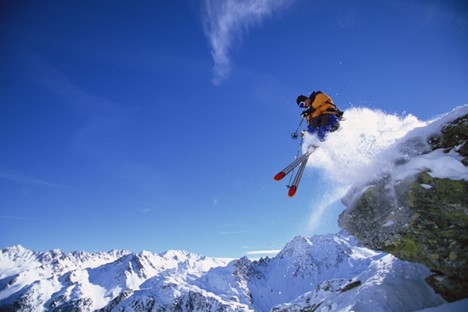Tony is a financial advisor from Edmond, Oklahoma who enjoys hitting the slopes when he’s not in the office. In the following article, Tony Cross delves into the world of off-piste skiing, exploring what it entails, safety considerations, and highlighting some of the best backcountry trails around the globe.
Skiing is not just a sport; it’s a thrilling adventure that takes enthusiasts to some of the most breathtaking landscapes on Earth. While skiing on groomed slopes offers its own excitement, off-piste skiing, also known as backcountry skiing, takes the experience to a whole new level of adventure and challenge.
Tony Cross Explains Off-Piste Skiing
Off-piste skiing refers to skiing on untamed, unmarked, and ungroomed slopes outside of designated ski resort boundaries. Tony Cross of Edmond, Oklahoma says that unlike traditional alpine skiing, which takes place on maintained trails and slopes, off-piste skiing allows skiers to explore natural terrain, including steep chutes, powder-filled bowls, and pristine backcountry landscapes. It’s a test of skill, endurance, and a deep connection with nature.
Safety Considerations
Avalanche Awareness and Safety
- Education: Before heading into the backcountry, skiers should undergo avalanche safety training, including recognizing avalanche terrain, understanding snowpack stability, and practicing rescue techniques.
- Gear: Essential safety gear includes an avalanche transceiver (beacon), shovel, and probe. Skiers should also carry and know how to use these tools in case of an avalanche emergency.
Weather and Terrain Conditions
- Preparation: Check weather forecasts and avalanche reports before venturing into the backcountry. Tony Cross says to be mindful of changing weather conditions and their impact on snow stability and visibility.
Navigation and Route Planning
- Maps and GPS: Familiarize yourself with the terrain using topographic maps and GPS devices. Plan your route in advance and communicate it with your skiing partners.
Group Dynamics
- Communication: Establish clear communication and decision-making protocols within your skiing group. Practice safe skiing techniques and maintain visual contact with your partners at all times.
Best Backcountry Skiing Destinations
Chamonix, France
Known as the “Mecca of Skiing,” Chamonix offers legendary off-piste terrain, including the Vallée Blanche glacier run and steep descents from Aiguille du Midi.
La Grave, France
La Grave is renowned for its challenging descents, untouched powder, and panoramic views of the La Meije massif. It’s a paradise for experienced skiers seeking adventure.
Verbier, Switzerland
Verbier’s Mont Fort and Mont Gelé areas offer extensive off-piste opportunities with a variety of terrain, from open powder fields to narrow couloirs.
Whistler, Canada
Backcountry enthusiasts flock to Whistler’s Spearhead Range and Garibaldi Provincial Park for epic powder skiing, glacier descents, and stunning alpine scenery.
Jackson Hole, USA
Known for its steep and challenging terrain, Jackson Hole’s backcountry offers adrenaline-pumping descents in the Teton Range and Grand Teton National Park.
Tips for Off-Piste Skiing
 Tony Cross Discusses Skill and Fitness
Tony Cross Discusses Skill and Fitness
- Skill Level: Off-piste skiing requires advanced skiing skills, including proficiency in deep snow, steep slopes, and variable conditions.
- Fitness: Build endurance and strength through regular cardiovascular and strength training exercises to handle long ascents and challenging descents.
Equipment
- Safety Gear: Besides avalanche safety equipment, skiers should carry a first aid kit, repair tools for equipment, and extra layers of clothing for changing weather conditions.
- Skis and Bindings: Tony Cross of Edmond, Oklahoma suggests choosing skis with wider waists and bindings suitable for off-piste skiing to enhance floatation and control in deep snow.
Environmental Responsibility
- Leave No Trace: Respect natural environments by packing out all trash, avoiding sensitive wildlife habitats, and following designated routes to minimize environmental impact.
Conclusion
Off-piste skiing offers an exhilarating escape into nature’s untamed beauty, challenging skiers with its rugged terrain and rewarding them with unforgettable experiences. However, it comes with inherent risks that require careful planning, preparation, and adherence to safety protocols. Tony Cross of Edmond, Oklahoma concludes that by equipping yourself with the necessary skills, knowledge, and equipment, you can safely explore some of the world’s best backcountry trails and immerse yourself in the thrill of off-piste skiing. Whether you seek steep couloirs in the Alps or powder-filled bowls in North America, off-piste skiing promises adventure, excitement, and a deep appreciation for the wonders of winter landscapes. Embrace the challenge, respect the environment, and ski safely to make the most of your off-piste adventures.








